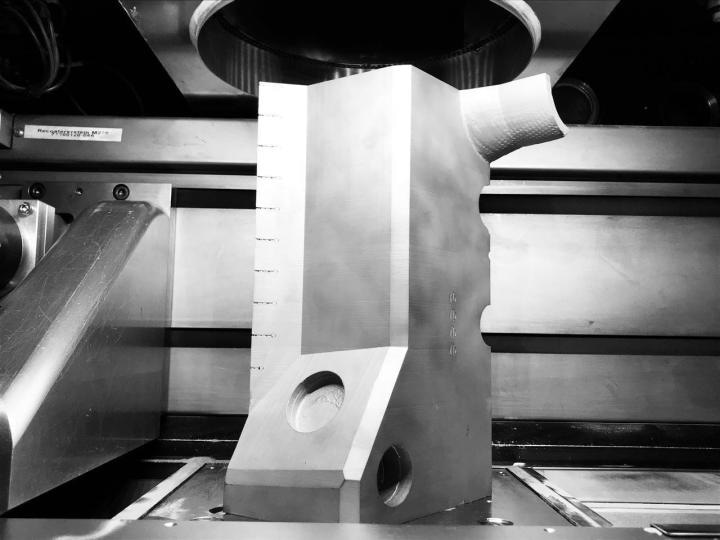Dec 12 2017
A new method by which to 3D print metals, involving an extensively used stainless steel, has been shown to realize exceptional levels of both ductility and strength, when compared to counterparts from more conventional processes.
 3D printed part for nuclear fusion test reactor (Photo credit: Dr Leifeng Liu, University of Birmingham)
3D printed part for nuclear fusion test reactor (Photo credit: Dr Leifeng Liu, University of Birmingham)
The findings, reported in Materials Today, describe how a joint research team from the University of Birmingham, UK, Stockholm University, Sweden and Zhejiang University, China were able to enhance the process parameters during 3D printing to accomplish the results.
The research is opposing to the skepticism surrounding the ability to make robust and ductile metals using 3D printing, and as such the discovery is vital to moving the technology forward for the manufacturing of heavy duty components.
3D printing has long been accepted as a technology which can possibly transform the way of manufacturing, allowing one to quickly construct objects with intricate and tailored geometries.
With the technology rapidly developing in recent years, 3D printing, particularly metal 3D printing, is swiftly progressing toward extensive industrial application.
Indeed, the manufacturing leader General Electric (GE) has already been using metal 3D printing to create certain key parts, such as the fuel nozzles in their newest LEAP aircraft engine. The technology helps GE to minimize 900 separate parts into just 16, and make fuel nozzles 60% cheaper and 40% lighter.
The worldwide revenue from the industry is predicted to be more than 20 billion USD per year by the year 2025. Regardless of the bright future, the quality of the products from metal 3D printing has been susceptible to skepticism. In majority of metal 3D printing processes, products are directly made from metal powders, which make it prone to defects, therefore causing weakening of mechanical properties.
Dr. Leifeng Liu, who is the key participant of the project, lately moved to the University of Birmingham from Stockholm University as an AMCASH research fellow. He said, “Strength and ductility are natural enemies of one another, most methods developed to strengthen metals consequently reduce ductility.”
The 3D printing technique is known to produce objects with previously inaccessible shapes, and our work shows that it also provides the possibility to produce the next generation of structural alloys with significant improvements in both strength and ductility.
Dr. Leifeng Liu
This has been made possible due to the ultrafast cooling rate, projected to range from 1000 °C per second to 100 million °C per second – which was not possible in bulk metal production process until the arrival of 3D printing.
Metals that are cooled down so rapidly result in a so-called non-equilibrium state, allowing for certain remarkable microstructures like the sub-micro-sized dislocation network - which was shown in this paper to be the key reason of the enhanced mechanical properties.
This work gives researchers a brand new tool to design new alloy systems with ultra-mechanical properties. It also helps metal 3D printing to gain access into the field where high mechanical properties are required like structural parts in aerospace and automotive industry.
Dr. Leifeng Liu
Dr. Yu-Lung Chiu, Dr. Ji Zou and Dr. Jing Wu, all from School of Metallurgy and Materials at the University of Birmingham, comprise the Birmingham team in this research. Dr. Chiu, who is in charge of the Electron Microscopy Centre, has designed a micro and nano material testing system inside the electron microscopes which makes it possible to test in-situ the performance and mechanism of the sample during mechanical tests. It significantly helps to identify effective microstructural characteristics for enhanced properties and, more notably, to comprehend the mechanisms.